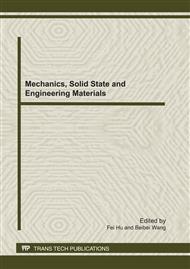p.3
p.10
p.16
p.22
p.28
p.33
p.39
p.44
p.49
The Investigation of Creep Behavior for NiAl-28Cr-5.5Mo-0.5Hf-0.02wt.%P Alloy at High Temperature
Abstract:
The Microstructure and creep behavior for NiAl-28Cr-5.5Mo-0.5Hf-0.02wt.%P alloy at high temperature have been investigated in this paper. The results reveal that the high temperature creep behavior of the NiAl-28Cr-5.5Mo-0.5Hf-0.02wt.%P alloy is characterized by transient primary creep and dominant steady-state creep as well as ternary creep behavior. The primary creep can be described by Garofalo equation and the steady-state creep can be depicted by Dorn equation. The creep mechanisms are viscous glide of dislocations at lower and middle testing temperatures and dislocation climb at higher temperature. No change of the microstructure for the testing alloy indicates that the creep fracture is controlled by the formation and propagation of cavities and cracks, and the creep fracture behavior obeys Monk man-Grant relationship.
Info:
Periodical:
Pages:
28-32
Citation:
Online since:
July 2011
Authors:
Keywords:
Price:
Сopyright:
© 2011 Trans Tech Publications Ltd. All Rights Reserved
Share:
Citation:


